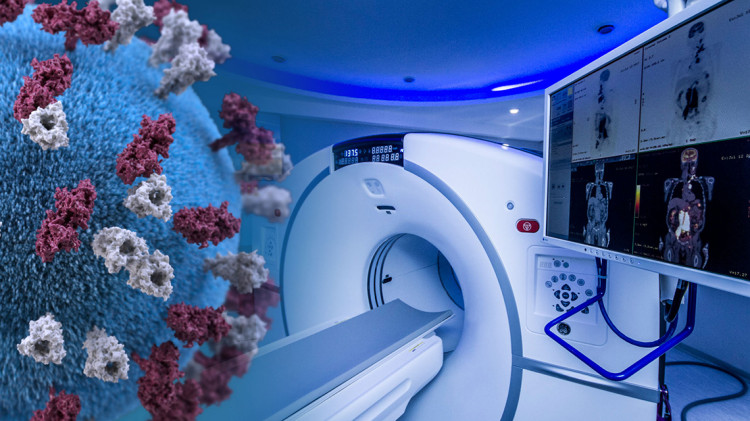The International Atomic Energy Agency (IAEA) has developed guidelines to help nuclear medicine departments adapt operating procedures to minimize the risk of COVID-19 infections among patients, staff and the public. The guidelines also draw attention to possible shortages of essential imaging radiopharmaceuticals due to global air traffic restrictions.
Published in the European Journal of Nuclear Medicine and Molecular Imaging, the document makes recommendations based on a typical patient’s journey through a nuclear medicine department. Over 30 million imaging studies are done globally every year to diagnose patients with cancer, cardiovascular diseases or dementia, among other health conditions.
“Non-communicable diseases continue to kill millions of people each year, and patients must have access to PET-CT scans and radiotherapy to battle cancer,” said the Director of the IAEA’s Human Health Division, May Abdel-Wahab. “Nuclear medicine physicians and staff need guidance to carry out imaging studies while preventing the further spread of COVID-19 during procedures. They also need to be prepared for potential disruptions in the supply chain of essential radioactive tracers.”
The guidelines were produced in response to requests from nuclear medicine departments in several IAEA Member States. They are based on a review of available literature as well as contributions from a panel of international experts and results from an IAEA-organized webinar entitled Coronavirus disease (COVID-19) Pandemic: Challenges for the Nuclear Medicine Departments. The Agency has also carried out a number of other webinars in recent weeks to discuss the challenges faced by nuclear medicine and radiotherapy departments and to share best practices during the pandemic.
“During the COVID-19 pandemic, special emphasis must be placed on implementing all infection prevention and control measures so that the essential nuclear medicine services can be provided,” said Diana Paez, lead author of the guidelines and head of the IAEA Nuclear Medicine and Diagnostic Imaging Section. “The document is a targeted effort to support departments in achieving this objective during this most challenging time.”
The guidelines also warn about potential disruptions in the supply of essential imagining radioisotopes, such as radioiodine and molybdenum-technetium, due to global air transport restrictions. They advise managers to maintain detailed inventories as well as lists of all possible suppliers and distribution channels.
Based on World Health Organization (WHO) guidance for essential health services during an outbreak, the IAEA document covers measures such as training for robust COVID-19 screening in patients and staff, strict use of personal protection equipment (PPE), distancing, use of communication technologies in the discussion of cases and findings, handwashing and respiratory hygiene measures, and cleaning and disinfection of equipment and accessories. It also details how nuclear medicine practitioners should proceed if during procedures, such as a PET-CT scan for the evaluation of cancer, findings show patterns consistent with a possible additional COVID-19 infection.
“The guidelines offer a practical checklist, which is very welcome at this time where there is lot of uncertainty and a lack of consistent information throughout the medical field,” said Stefano Fanti, Director of the Nuclear Medicine Division at the St. Orsola-Malpighi University Hospital in Bologna and one of the authors of the paper. “They will help to ensure that we can continue to deliver these essential services while mitigating COVID-19 infection risk in patients and staff.”


